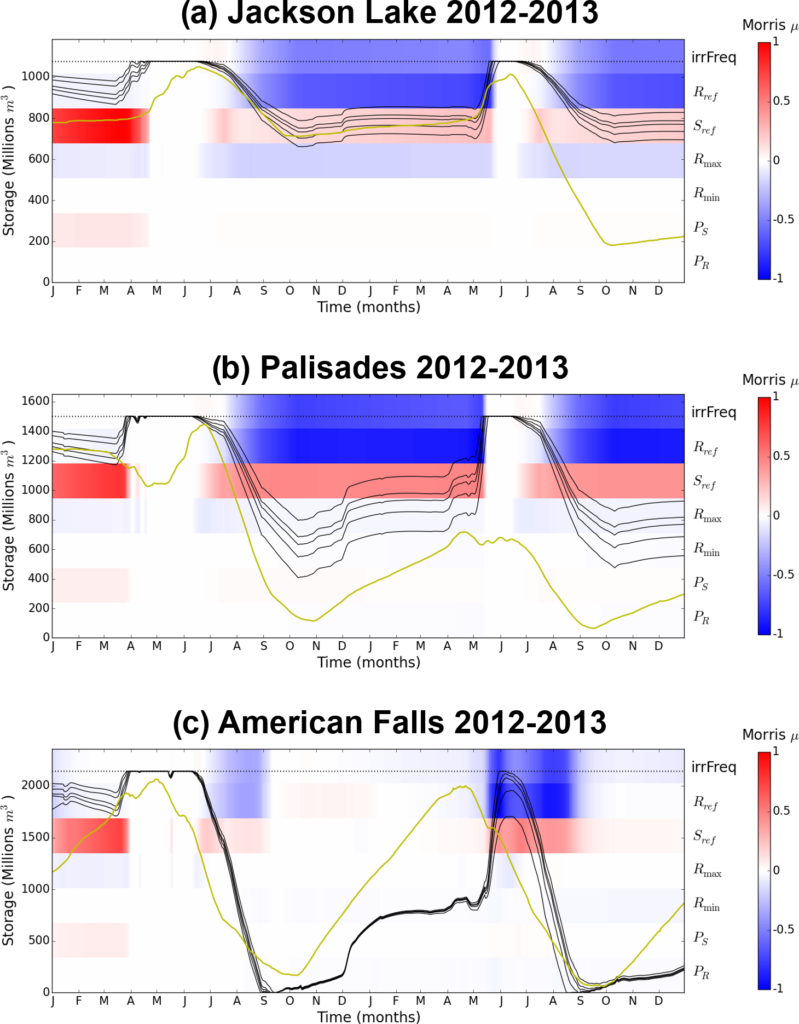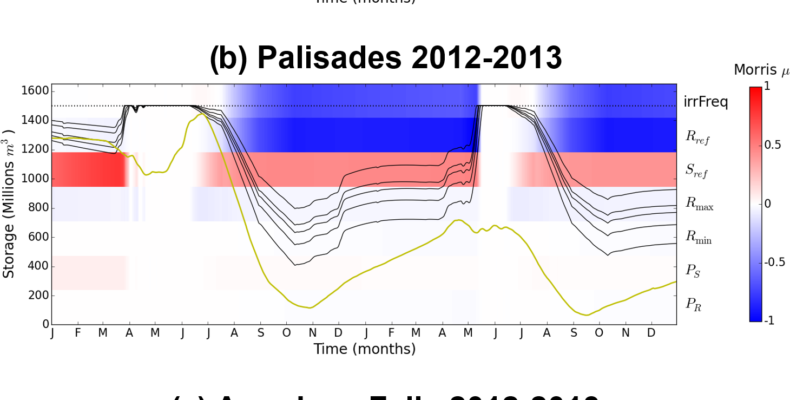Rougé, C., Reed, P. M., Grogan, D. S., Zuidema, S., Prusevich, A., Glidden, S., Lamontagne, J. R., and Lammers, R. B.
DOI: https://doi.org/10.5194/hess-25-1365-2021
Abstract:
Major multi-reservoir cascades represent a primary mechanism for dealing with hydrologic variability and extremes within institutionally complex river basins worldwide. These coordinated management processes fundamentally reshape water balance dynamics. Yet, multi-reservoir coordination processes have been largely ignored in the increasingly sophisticated representations of reservoir operations within large-scale hydrological models. The aim of this paper is twofold, namely (i) to provide evidence that the common modeling practice of parameterizing each reservoir in a cascade independently from the others is a significant approximation and (ii) to demonstrate potential unintended consequences of this independence approximation when simulating the dynamics of hydrological extremes in complex reservoir cascades. We explore these questions using the Water Balance Model, which features detailed representations of the human infrastructure coupled to the natural processes that shape water balance dynamics. It is applied to the Upper Snake River basin in the western US and its heavily regulated multi-reservoir cascade. We employ a time-varying sensitivity analysis that utilizes the method of Morris factor screening to explicitly track how the dominant release rule parameters evolve both along the cascade and in time according to seasonal high- and low-flow events. This enables us to address aim (i) by demonstrating how the progressive and cumulative dominance of upstream releases significantly dampens the ability of downstream reservoir rules’ parameters to influence flow conditions. We address aim (ii) by comparing simulation results with observed reservoir operations during critical low-flow and high-flow events in the basin. Our time-varying parameter sensitivity analysis with the method of Morris clarifies how independent single-reservoir parameterizations and their tacit assumption of independence leads to reservoir release behaviors that generate artificial water shortages and flooding, whereas the observed coordinated cascade operations avoided these outcomes for the same events. To further explore the role of (non-)coordination in the large deviations from the observed operations, we use an offline multi-reservoir water balance model in which adding basic coordination mechanisms drawn from the observed emergency operations is sufficient to correct the deficiencies of the independently parameterized reservoir rules from the hydrological model. These results demonstrate the importance of understanding the state–space context in which reservoir releases occur and where operational coordination plays a crucial role in avoiding or mitigating water-related extremes. Understanding how major infrastructure is coordinated and controlled in major river basins is essential for properly assessing future flood and drought hazards in a changing world.

